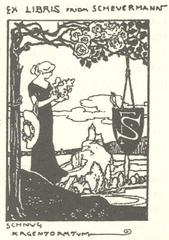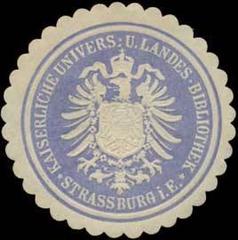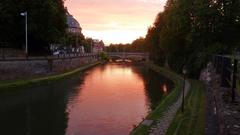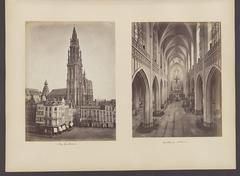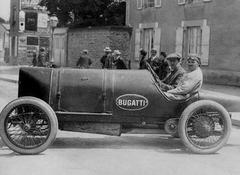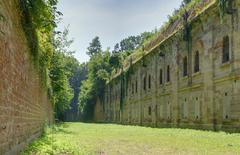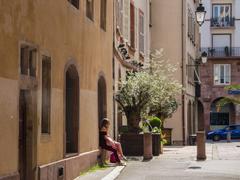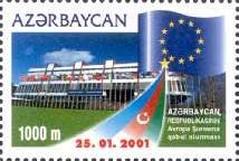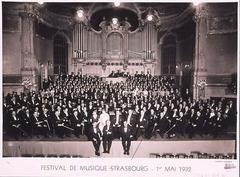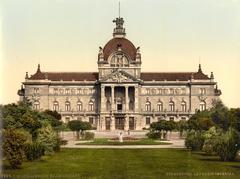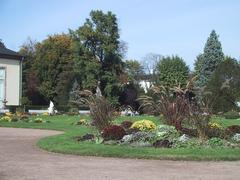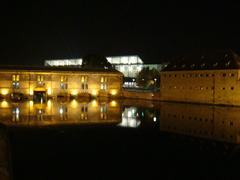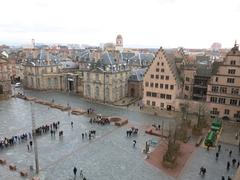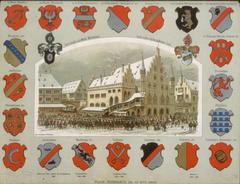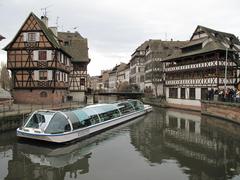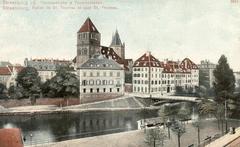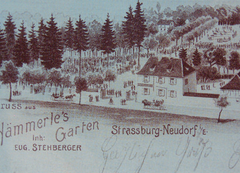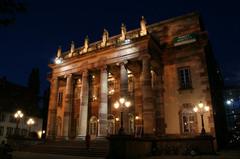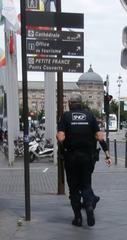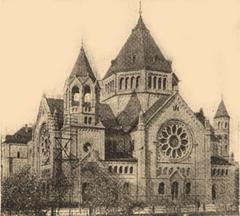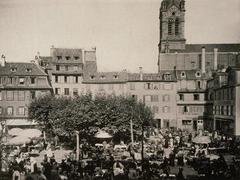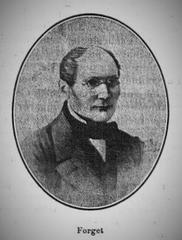
Comprehensive Guide to Visiting Strasbourg, Bas-Rhin, France
Publication Date: 14/08/2024
Captivating Introduction
Nestled at the crossroads of Europe, Strasbourg is a city where history and modernity dance in harmony. Imagine a place where Gothic spires pierce the sky, medieval streets whisper tales of yore, and the scent of freshly baked tarte flambée wafts through the air. Welcome to Strasbourg, the jewel of the Bas-Rhin department in France. This city has a storied past that reads like a novel, filled with Celts, Romans, and even Johannes Gutenberg, the father of the printing press (source).
Strasbourg is like a chameleon, ever-changing yet always captivating. Picture this: a city that has swapped nationalities four times in the past 150 years. From its Roman roots as Argentoratum to its current role as a beacon of European unity, Strasbourg’s resilience and adaptability are nothing short of awe-inspiring. Imagine walking through the Grande Île, a UNESCO World Heritage Site, feeling the cobblestones beneath your feet as you explore centuries-old architecture (source).
But Strasbourg is not just a relic of the past. It’s a living, breathing city that pulses with life. Whether you’re sipping on Alsatian wine in a cozy bistro or navigating the city’s efficient tram system, Strasbourg offers a blend of old-world charm and modern convenience. And let’s not forget its role on the global stage, housing the European Parliament and the European Court of Human Rights (source).
Ready to uncover the secrets of Strasbourg? From hidden statues and local lingo to seasonal highlights and quirky customs, this guide will be your ultimate companion. So, lace up your walking shoes and prepare to embark on a journey through time and charm.
Table of Contents
- Historical Background
- Visitor Tips
- Interactive Elements
- Cultural Context and Etiquette
- Pop Culture References
- Local Lingo Lessons
- Myth Busting and Surprises
- Call to Action
Historical Background of Strasbourg, Bas-Rhin, France
Early History and Roman Era
Did you know Strasbourg has changed nationalities four times in the last 150 years? Imagine a city that’s been a Roman outpost, a Gothic marvel, and a symbol of European unity – that’s Strasbourg for you! Nestled in the heart of the Bas-Rhin department, Strasbourg’s story begins with the Celts who called it Argentoratum. The Romans saw its strategic value along the Rhine River and turned it into a bustling military outpost in 12 BC, complete with fortifications, public baths, and an amphitheater.
Medieval Period
Fast forward to 1262, when Strasbourg became a free imperial city of the Holy Roman Empire. This newfound status ignited an economic and cultural boom. The construction of the magnificent Strasbourg Cathedral started in 1015 and took several centuries to complete, finally finishing in 1439. Its spire, at 142 meters, held the title of the world’s tallest building until the 19th century. Picture yourself walking through medieval marketplaces, vibrant with traders and artisans, benefiting from its prime location at the crossroads of major trade routes.
Renaissance and Reformation
The Renaissance transformed Strasbourg into a beacon of humanism and innovation. Johannes Gutenberg, the man behind the revolutionary printing press, spent time here, turning the city into an early adopter of printed books. The Protestant Reformation left its mark in 1523, with Strasbourg becoming a sanctuary for reformers like Martin Bucer and John Calvin. Imagine the vibrant discussions and debates that must have filled the air!
French Annexation and the Franco-Prussian War
Strasbourg’s strategic importance kept it in the spotlight. In 1681, King Louis XIV annexed the city, and the Treaty of Ryswick in 1697 sealed the deal. The famous military engineer Vauban modernized its fortifications, adding to its already impressive defenses.
The Franco-Prussian War (1870-1871) brought destruction to Strasbourg, with Prussian forces bombarding the city. After France’s defeat, the city, along with the Alsace region, was ceded to the German Empire by the Treaty of Frankfurt in 1871. This German rule lasted until the end of World War I in 1918, when the Treaty of Versailles returned the region to France.
World War II and Modern Era
Strasbourg’s rollercoaster history continued into the 20th century. Annexed by Germany once more during World War II, it was liberated in November 1944 and returned to France post-war. Today, Strasbourg stands as a symbol of Franco-German reconciliation and European unity. Home to the Council of Europe since 1949 and the European Parliament since 1992, the city’s historic center, the Grande Île, was declared a UNESCO World Heritage Site in 1988.
Recent Developments
In recent years, Strasbourg remains a crucial player on the European stage, housing the European Court of Human Rights and the European Ombudsman. The 2021 merger of the Bas-Rhin and Haut-Rhin departments into the European Collectivity of Alsace underscores the region’s unique identity.
Feel the cobblestones under your feet as you wander through Petite France, with the scent of freshly baked pastries wafting from the boulangeries. Discover hidden gems like a quaint café serving the best tarte flambée or an obscure alley with stunning medieval architecture. For history buffs, the Strasbourg Cathedral, the Palais Rohan, and the Petite France district are must-sees. Dive deeper into the past at the Alsatian Museum and the Historical Museum of Strasbourg.
For genealogical explorers, the Department Archives of Bas-Rhin offer extensive resources, including church records, civil registration, and census data. These are invaluable for tracing ancestry or understanding Strasbourg’s historical context.
Strasbourg’s history is a testament to its resilience and enduring significance. From ancient Roman roots to its role as a modern European capital, the city continually adapts and thrives, making it a captivating destination for history enthusiasts and travelers alike.
Interactive Elements
Challenge: Can you find the hidden statue of Gutenberg in the city center? Snap a photo and share it with us!
Cultural Context and Etiquette
Did you know that locals take their ‘Stammtisch’ very seriously? It’s a regular gathering of friends at a local pub, and missing it is almost a sin! Also, remember to greet with a friendly ‘Bonjour’ and a smile.
Pop Culture References
Strasbourg’s picturesque streets were the backdrop for the movie ‘A Very Long Engagement.’ Stroll around and see if you can spot the famous locations!
Local Lingo Lessons
Learn to say ‘Merci vielmols’ (Thank you very much in Alsatian). It’s sure to bring a smile to a local’s face! Or try ‘S’geet?’ (How are you?) to impress your new friends.
Myth Busting and Surprises
Surprise! Despite popular belief, the Strasbourg Cathedral was never intended to be completed with a second spire. Its asymmetry is part of its charm! And did you know that the city’s iconic tarte flambée was originally a way to test the heat of wood-fired ovens?
Call to Action
Ready to explore Strasbourg’s rich tapestry of history and culture? Download the Audiala app for beautifully crafted, concise yet deep audio guides that will enhance your journey through this fascinating city. Happy exploring!
Discover Strasbourg, Bas-Rhin, France: A Journey Through Time and Charm
Best Time to Visit
Strasbourg is a city that dances to a different rhythm each season, offering unique experiences all year round:
- Spring (March to May): Imagine strolling through streets adorned with blooming flowers and mild, refreshing weather. Fewer tourists mean you can explore more freely and even snag some bargains. Just keep an umbrella handy for those unpredictable showers (source).
- Summer (June to August): Summer in Strasbourg is like a grand festival. Expect bustling streets, warm weather, and a vibrant atmosphere. Book your tickets and accommodations early to avoid the rush, and don’t be surprised if some local spots take a summer break (source).
- Fall (September to November): The crisp air and golden leaves make fall a magical time. It’s perfect for visiting local wineries and enjoying the city’s energetic vibe (source).
- Winter (December to February): Winter turns Strasbourg into a fairy tale, with its enchanting Christmas markets and festive decorations. Bundle up in warm, waterproof clothes to fully enjoy the holiday spirit (source).
What to Pack
- Summer: Pack light, breathable clothing, sunscreen, a hat, and comfy walking shoes. An umbrella can also be a lifesaver for those sudden summer showers (source).
- Winter: Think layers! Warm, waterproof clothing, a heavy coat, gloves, a scarf, and waterproof boots will keep you cozy. Indoor and outdoor temperatures can vary, so be prepared (source).
- Spring and Fall: Versatility is key. Pack a mix of warm and light clothing, a reliable jacket, and an umbrella for those unpredictable weather days (source).
Getting Around
- Walking: Strasbourg is a walker’s paradise, especially within the Grande Île and La Petite France districts. The charming, narrow streets and scenic canals make every stroll a delightful adventure (source).
- Biking: With its bike-friendly paths and numerous rental options, cycling is a fantastic way to explore Strasbourg and its picturesque outskirts (source).
- Public Transport: The city’s trams and buses are efficient and convenient. Consider a Strasbourg City Pass for unlimited travel and access to multiple attractions (source).
- Boat Tours: Experience Strasbourg from a new perspective with a boat tour along the Ill River—a highly recommended adventure (source).
Accommodation
- Luxury Hotels: For a lavish stay, choose hotels in the Grande Île or La Petite France areas. These spots offer stunning views and proximity to major attractions (source).
- Mid-Range Hotels: Comfort and convenience await in Quartier Krutenau or near the European district. These areas strike a balance between budget and luxury (source).
- Budget Hotels: Affordable options are plentiful in the outskirts or less touristy neighborhoods. Hostels and budget hotels provide basic amenities without breaking the bank (source).
Dining and Cuisine
- Alsatian Cuisine: Dive into a culinary adventure with Strasbourg’s unique blend of French and German flavors. Sample local delights like tarte flambée, choucroute garnie, and baeckeoffe (source).
- Restaurants: La Petite France is a haven for traditional Alsatian eateries. For a touch of history and fine dining, visit Maison Kammerzell with its stunning views of the Cathedral (source).
- Wine Bars: Alsace is renowned for its wines, especially whites like Riesling and Gewürztraminer. Relax with a glass at one of the cozy wine bars scattered throughout the city (source).
Key Attractions
- Strasbourg Cathedral: This Gothic marvel is a must-see. Climb to the top for panoramic views of the city (source).
- La Petite France: Get lost in this charming district filled with half-timbered houses, winding canals, and cobblestone streets (source).
- Grande Île: Wander through the historic center, a UNESCO World Heritage Site brimming with medieval architecture and quaint squares (source).
- European Parliament: Peek into the workings of European politics with a visit to the European Parliament (source).
- Christmas Markets: If you’re visiting in December, the Christmas markets are a festive highlight, offering delightful decorations, artisanal gifts, and seasonal treats (source).
Practical Tips
- Language: While French is the main language, many locals speak German and English. Knowing a few basic French phrases can make your experience even more enjoyable (source).
- Currency: The Euro (€) is the currency here. Credit cards are widely accepted, but carrying some cash for small purchases and emergencies is wise (source).
- Safety: Strasbourg is generally safe, but stay aware and keep an eye on your belongings, especially in crowded areas (source).
- Local Etiquette: Politeness is key. Always greet with a “Bonjour” (Good day) or “Bonsoir” (Good evening). Tipping is appreciated but not required; rounding up the bill or leaving a small amount is customary (source).
Unlock the Secrets of Strasbourg with Audiala
Ready to uncover Strasbourg’s hidden gems and stories? Download Audiala, your perfect travel companion, offering expertly crafted audio guides that bring the city to life. Explore like a local and make the most of your visit. Download Audiala today and start your adventure!
Call to Action
As you wander through Strasbourg, it’s easy to see why this city has captivated so many for centuries. Its rich tapestry of history, from Roman outposts to Gothic cathedrals, creates a backdrop that’s both awe-inspiring and humbling. The city’s modern role as a hub of European unity only adds to its allure, making it a must-visit destination for history buffs and casual travelers alike (source).
But Strasbourg is more than its historical landmarks and political institutions. It’s a city of sensory delights: the taste of a perfectly baked tarte flambée, the sight of vibrant Christmas markets, and the sound of lively ‘Stammtisch’ gatherings at local pubs. These experiences are the heartbeat of Strasbourg, offering glimpses into its unique culture and traditions (source).
And as you explore, don’t just stick to the well-trodden paths. Seek out the hidden gems, the quaint cafes, and the lesser-known alleys that reveal the city’s true character. Whether you’re here for a weekend or a week, Strasbourg promises a journey filled with discovery and delight.
So, are you ready to explore Strasbourg’s rich tapestry of history and culture? Download the Audiala app for expertly crafted audio guides that will enhance your journey. With Audiala, you’ll uncover the hidden stories and secrets that make Strasbourg truly unforgettable. Happy exploring!
References
- FamilySearch. (n.d.). Bas-Rhin, France Genealogy. Retrieved from https://www.familysearch.org/en/wiki/Bas-Rhin,_France_Genealogy
- My Global Viewpoint. (n.d.). Best Things to Do in Strasbourg, France. Retrieved from https://www.myglobalviewpoint.com/best-things-to-do-in-strasbourg-france/
- PlanetWare. (n.d.). Tourist Attractions in Strasbourg, France. Retrieved from https://www.planetware.com/tourist-attractions-/strasbourg-f-a-stu.htm
- Dabbling in Jet Lag. (n.d.). Best Time to Visit Strasbourg, France. Retrieved from https://www.dabblinginjetlag.com/best-time-to-visit-strasbourg-france/
- Snippets of Paris. (n.d.). Things to do in Strasbourg. Retrieved from https://snippetsofparis.com/things-to-do-in-strasbourg/
- France.fr. (n.d.). What to do and see in Strasbourg. Retrieved from https://www.france.fr/en/article/que-faire-que-voir-strasbourg/
- Our Escape Clause. (n.d.). Things to do in Strasbourg, France. Retrieved from [https://www.ourescapeclause.com/things-to-do-in-strasbourg-france/







































